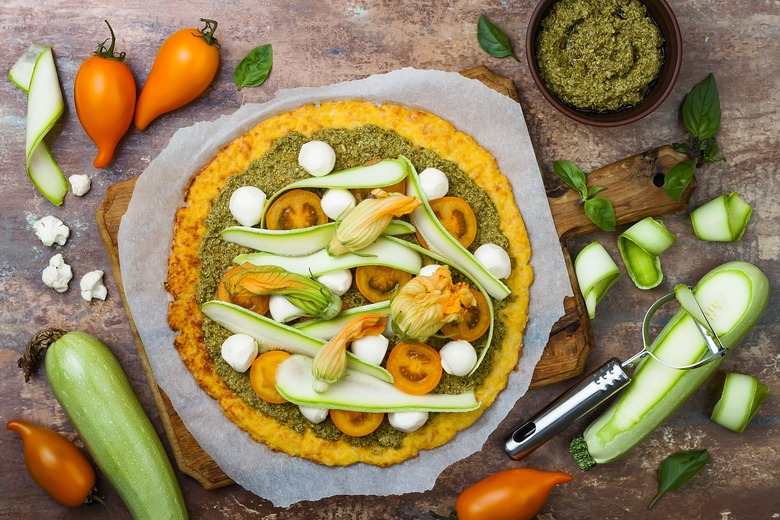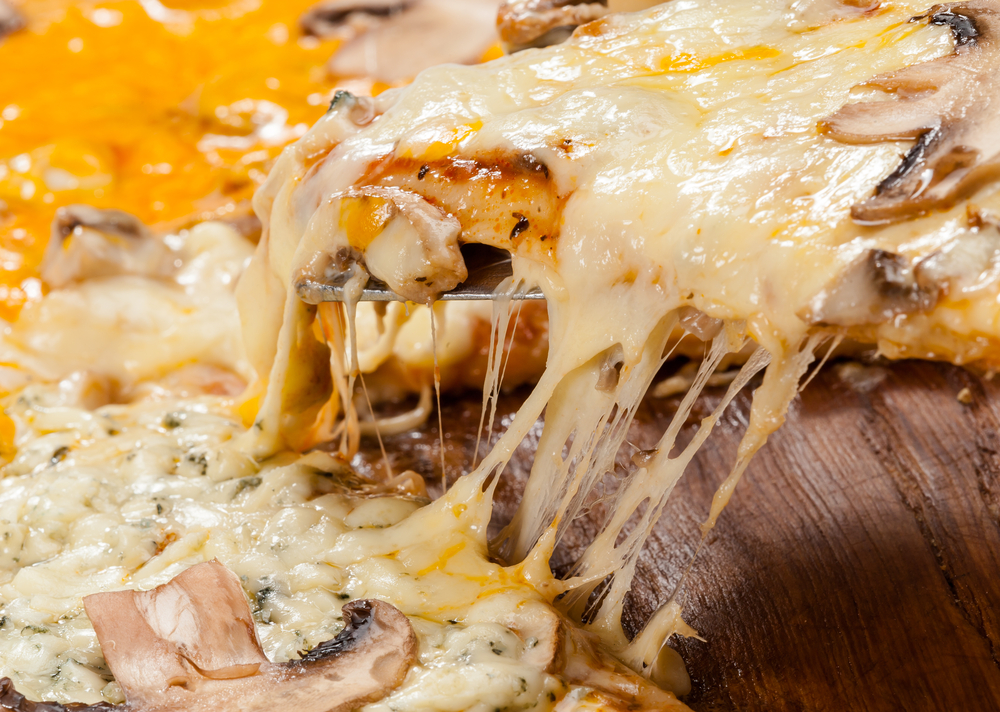Ditch The Cauliflower Crust: You Might As Well Just Eat Bread
Cauliflower crust, part of the aftermath of the vegetable food craze that brought us zoodles and spaghetti squash, has made an explosive entrance into the food world, enabling pizza consumption for gluten-free and low-carb dieters alike.
However, there seems to be a horrible misconception surrounding whether or not cauliflower crust is actually any better for you than plain, old, fluffy, delicious bread.
Spoiler alert: It's not.
Okay, in a few isolated cases it is. For instance, if you cook the cauliflower crust yourself (or somehow find a crust on the market that doesn't fall victim to these health food faux pas) your veggie crust could be the better call.
But as far as most crusts are concerned, the cauliflower version of any pizza crust is probably worse for you than the glutinous alternative.
Most cauliflower crusts, especially those mass produced and marketed to the Lean Cuisine-loving demographic, are covertly loaded with:
- Egg.
- More cheese (because your pizza obviously didn't have enough).
- Oil.
- Calorie-dense, gluten-free flour.
It makes sense. The crust provides half the flavor of pizza! Faced with the conundrum of how on Earth to make cauliflower into a reasonable substitute for the ultimately-satisfying bread crust, companies realized they'd need to add more than just vegetables to the mix before people would buy it. So they added flavorful, gluten-free ingredients — ingredients that also happen to be highly caloric, dense with fats, and heavy with starches.
Are those ingredients healthier for you than bread? Let's do a little side-by-side dinner comparison.
We found two of the most popular brands of both glutinous crust and cauliflower crust. For the cauliflower crust, we chose Cali'flour Foods, a growing company that sells frozen cauliflower crusts nationwide. For the regular stuff, we chose the famous Boboli brand, found in freezer aisles everywhere for as long as we can remember. We compared crusts of the same size, so the competition is fair.
The non-vegan iteration of the company's cauliflower crust does only have a meager 180 calories for the entire pie, which is half the amount of the Boboli crust. However, it has nearly three times the amount of fat, totaling to almost a fourth of your daily recommended intake. It's certainly low-carb. But what happens once you load your crust with oily sauce, cooking spray, and cheese? You're throwing your fat intake way out of proportion and severely skimping on the healthy carbs recommended by U.S. dietary guidelines.
Once you look at the ingredients of the cauliflower crust, the fat content makes sense. Other than the vegetable, the crust is made entirely out of eggs and cheese.
Assume you choose to add cheese, tomato sauce, and vegetables to your pizza. Reasonable, right? Using that crust, your "healthy" pizza is made almost entirely of cheese.
You'd honestly be better off sitting down to a gigantic slab of mozzarella.
Looking at the company's plant-based, vegan crusts is even more frightening. This version is sold in the same size as the 380-calorie Boboli pie, yet it contains significantly more calories and a mind-boggling 36 grams of fat. The Boboli has 8 grams. (A McDonald's Big Mac, for comparison, has 33.)
So a personal-sized portion of vegan cauliflower crust has more calories and more grams of fat than an entire Big Mac from McDonald's. (And virtually no protein.)
There are, of course, a few exceptions to this disappointingly unhealthy trend. Trader Joe's, the grocery store of choice for millennials and trend-followers on a budget, released their own line of cauliflower crust that's actually pretty healthy. However, it's not low carb. Trader Joe's just replaces regular white flour with corn- and potato-based flour alternatives.
The point here is that you shouldn't be fooled by marketing and hashtags — sometimes, the trendy product isn't healthier just because it's trending. And just because someone on Instagram is doing it doesn't mean that you should, too.
Do your research. Read the ingredients. And at the freezer aisle, ask yourself: Do you want to deny your pizza craving with an unsatisfying pie of cheese and oil for dinner? Or do you want regular, glutinous, taste-bud-delighting pizza?

